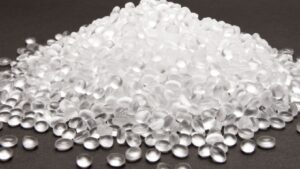
Understanding Visual Variations in BOPP Film
BOPP (Biaxially Oriented Polypropylene) films are known for their clarity, strength, and versatility, making them a go-to choice for packaging across industries. However, if you’ve worked with BOPP film for any length of time, you may have noticed an occasional color variation between rolls. In addition, even within the same roll.
What causes these differences in appearance, and should there be concern?
-
The Role of Raw Materials in BOPP Film
At the heart of every BOPP film is polypropylene resin. Manufacturers follow tight specifications. However, natural variations in resin batches, especially when sourced from different suppliers, may lead to subtle changes in the film’s visual properties. Furthermore, additives like slip agents, anti-static compounds, and UV stabilizers may influence the film’s tone and clarity. Particularly, if the formulation fluctuates slightly between manufacturing runs.
-
Processing Conditions Matter
BOPP film is made through a complex orientation process, stretching the film in both the machine and transverse directions. Temperature, stretching speed, and cooling rates all play a role in how the film sets and how light passes through it. Even minor adjustments to these parameters can affect gloss, haze, or tint, resulting in visual differences from one roll to the next.
-
Thickness Variation and Light Diffusion
Even when within tolerance, slight variations in film thickness can change how light refracts through the material. Thicker areas may look slightly duller or darker, while thinner sections may appear clearer or lighter. These changes are typically cosmetic and do not impact film performance.
-
Coatings, Metallization, and Surface Treatments for BOPP Film
If the BOPP film is coated, printed, or metallized, additional layers introduce more opportunities for visual variation. In metallized BOPP, for example, aluminum deposition uniformity is critical. Any inconsistency can cause differences in reflectivity and perceived color. Similarly, water-based or solvent coatings may appear uneven if drying conditions vary.
-
Aging, Storage, and Handling
Over time, BOPP film can experience slight yellowing or haze—especially if exposed to heat, humidity, or UV light. Proper storage is essential to maintain the film’s original appearance. Rolls that have aged differently or were stored in varied environments may show subtle differences in tone.
Is BOPP Color Variation a Quality Concern?
In most cases, color differences in BOPP film are cosmetic. The film still performs its core functions—sealing, barrier protection, printability—without compromise. However, in high-visibility applications such as consumer-facing packaging, even slight visual inconsistencies can impact brand perception. That’s why consistent quality standards and thorough inspection are vital.
Conclusion
Color variation in BOPP films is a common, manageable aspect of flexible packaging production. Understanding the underlying causes—and partnering with a film supplier who prioritizes consistency—can ensure your packaging meets both visual and performance standards.




